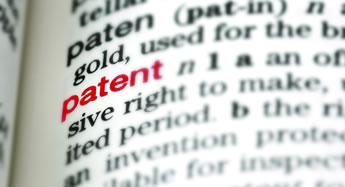Litigating royalties in a patent licence
July 2013
Negotiating a good patent licence is a challenging business at the best of times: securing the terms you want commercially and then drafting the agreement to accurately reflect the deal agreed and govern it. However, in tough economic circumstances, when many businesses are under financial strain, making sure the terms of a licence are clear and effective is especially important. Nowhere is this more true than in royalty clauses: a poorly drafted royalty clause may lead to a costly dispute where one party tries to unravel a valuable obligation to the other.
Here we look at three salient examples where disputes have arisen from agreements that are unclear about what right the royalty is to be paid on, how much is owed and when it is to be paid.
The right being licensed
The case of Oxonica Energy v Neuftec Limited1 shows how a lack of precision when determining the scope of the rights being licensed can result in a dispute about the correct royalty to be paid.
Oxonica took a licence from Neuftec to patents and know-how for cerium oxide fuel additives. This was so that it could use this technology together with its own nanoparticle expertise to develop Envirox, a particulate cerium oxide coated with an alkyl carboxylic acid compound. Oxonica paid royalties to Neuftec on sales of this product.
 One of the licensed patents was an international application under the Patent Cooperation Treaty (PCT). Later on, after the licence deal had been completed, this application matured into the grant of several national patents. By the stage of grant, the claims in the original PCT application had been narrowed in a number of significant countries.
One of the licensed patents was an international application under the Patent Cooperation Treaty (PCT). Later on, after the licence deal had been completed, this application matured into the grant of several national patents. By the stage of grant, the claims in the original PCT application had been narrowed in a number of significant countries.
Oxonica later found a different source of supply enabling the manufacture of a product called Envirox 2. Envirox 2 also used particulate cerium oxide, but it was instead coated with a different compound. This coating compound was not covered in the claims of the narrowed, granted patents, although it had been within the claims of the original PCT application. Oxonica took the view that Envirox 2 did not fall within the licensed claims and stopped paying a royalty to Neuftec. Consequently, the parties got into a dispute about whether royalties were due in respect of Envirox 2, under the following provisions of the licence:
The agreement provided that royalties were payable on products:
"falling within the scope of claims in the Licensed Application or Licensed Patent";
And, the definition of 'Licensed Application' included PCTs:
"and any continuation, continuation-in-part or divisional applications thereof as well as foreign counterparts and reissues thereof"'.
Amongst other matters, Oxonica argued that if the scope of the PCT claims were taken to be the basis of the royalty payment, it would be liable for payments on products sold in countries that were not actually covered by any patent. On the other hand, Neuftec's case was that the licence should be construed according to the scope of the know-how that was also being granted: that is, broad enough to get Oxonica into the fuel additives business. The royalty paid should reflect this, Neuftec said. It also said that unless the PCT were used as the basis for determining the technology covered by the patent, it would lead to a real practical problem that royalties would have to be calculated according to the patent in every country of sale.
In this case, the Court of Appeal took the approach that the royalty was too poorly drafted for inferences about its meaning from elsewhere in the agreement to be significant 2. Instead, the court guided itself using the principle that the more unreasonable the result of a particular interpretation, the more unlikely it is that the parties can have intended it. If they did intend it, then the more clearly they should have said so3.
How much is owed – royalty sharing
 A leading example of how ambiguous drafting can lead to a dispute about royalty obligations is the case of Cambridge Antibody Technology (CAT) v Abbott Biotechnology Limited4. This concerned royalty sharing arrangements in a development agreement relating to the anti-TNFa monoclonal antibody drug, Humira, indicated for arthritis treatment. The parties to the litigation had had responsibilities for different stages of the drug's development and, to reflect this, a risk sharing arrangement was put in place in the development agreement in the event that third party royalties needed to be paid due to the technology being used.
A leading example of how ambiguous drafting can lead to a dispute about royalty obligations is the case of Cambridge Antibody Technology (CAT) v Abbott Biotechnology Limited4. This concerned royalty sharing arrangements in a development agreement relating to the anti-TNFa monoclonal antibody drug, Humira, indicated for arthritis treatment. The parties to the litigation had had responsibilities for different stages of the drug's development and, to reflect this, a risk sharing arrangement was put in place in the development agreement in the event that third party royalties needed to be paid due to the technology being used.
The agreement included a licence of two CAT patents, one for making a 'DNA library' and the other for phage display – a technology able to express certain DNA sequences from the DNA library as antibody fragments. Antibody fragments identified as effective against TNFα could then be converted by Abbott to fully humanised antibodies and ultimately an anti-TNF drug. To undertake its development work, Abbott found that it did require licences to a number of third party patents. Some of these were for technologies similar to phage display and the DNA library and others for the later development steps to produce full human antibodies. The responsibility for paying royalties to the third party patents was dealt with in the agreement as follows:
Royalties paid to third parties, other than to [CAT] under the [CAT] Patents, to license rights needed by [Abbott], its Affiliates or permitted sublicensees, to practice or to have practiced the technology claimed in the Patents, will be borne equally by CAT and [Abbott], provided, however, that the royalty payable to CAT ... shall not be reduced below 2% (two percent) of Net Sales ...
It was this clause that gave rise to the dispute, because it was not clear what it meant by 'rights needed to practice or have practiced the technology claimed in the Patents'. This mattered, because it affected the number of third party patents for which the burden of paying royalties would have to be shared by CAT.
On CAT's view the clause only required it to share royalties on third party patents necessary to practise the technology for which it was the contributor. In other words, other patents relating to DNA library and phage display.
 On Abbott's view the "technology practised in the Patents" was everything in the development process, all the way to the production of Humira. This was a strict interpretation based on the fact that the phage display and DNA library patents licensed by CAT contained 'reach-through' claims that covered products that ultimately derived from using those technologies, including Humira itself. After a lengthy trial considering a large amount of evidence on the meaning of the clause, Mr Justice Laddie decided for CAT. In doing so, the judge was particularly swayed by other provisions in the agreement designed to share responsibilities, which were more consistent with CAT's interpretation.
On Abbott's view the "technology practised in the Patents" was everything in the development process, all the way to the production of Humira. This was a strict interpretation based on the fact that the phage display and DNA library patents licensed by CAT contained 'reach-through' claims that covered products that ultimately derived from using those technologies, including Humira itself. After a lengthy trial considering a large amount of evidence on the meaning of the clause, Mr Justice Laddie decided for CAT. In doing so, the judge was particularly swayed by other provisions in the agreement designed to share responsibilities, which were more consistent with CAT's interpretation.
The timing of royalty periods and payment
Cambridge Display Technology Ltd (CDT) v EI DuPont De Nemours5 illustrates how a dispute can arise regarding the timing of payments.
Dupont developed a light-emitting technology cellular telephone and portable computer displays, for which they needed to licence patents owned by CDT. However, a dispute arose about the Minimum Royalty periods for the purpose of calculating the shortfall payable under the following clause in the licence:
Within sixty (60) days of the end of (a) the first two Years under this Agreement and (b) each Year thereafter, the Licensee shall, in the manner provided in clause 3.6 below, pay to CDT the shortfall (if any) between the royalties paid in accordance with clause 3.1 above and the Minimum Royalty payable with respect to the period in question.
and the further definitions:
- Year: "the period of twelve months from the Effective Date and each subsequent consecutive period of twelve months during the period of this Agreement".
- Minimum Royalty: "in relation to each Year after 1 January 2003, US 1 million".
- Effective Date:16 October 2001.
Dupont's arguments included the point that the Minimum Royalty definition actually meant "each Year commencing after 1 January", hence the first relevant Year began on 16 October 2003. By contrast, CDT's position was effectively that the definition should be read as "each Year ending after 1 January 2003". If correct, this would mean a more favourable calculation of the shortfall due to CDT.
The principle followed by the judge at first instance, and by the Court of Appeal in this case, was this: the court can only depart from the words that the parties have used in the agreement, according to their natural meaning, if it is clear that some other interpretation was intended by the parties. That indication must either come from some other provision of the agreement itself or admissible evidence. There was no such guidance in the rest of the agreement. Therefore, although the court was not prepared to write any words into the agreement, it held that the natural reading of the shortfall clause together with the Minimum Royalty was clear and in favour of DuPont.
Conclusions
These cases illustrate the care that must be taken when drafting the provisions of a licence relating to the payment of royalty and what it is payable on. It may of course be the case that in the heat of negotiation and drafting, the parties understood what they were supposed to mean. It is often only later on, when payments become due, that a second look may give rise to an alternative interpretation. To avoid this possibility, consider taking the following steps:
- Is the clause consistent in its effect with other, similar, terms of the agreement?

- In particular, if sharing the risk of third party patent royalties, is the clause consistent with other risk-sharing provisions?
- Could the choice of words used in a clause give rise to more than one possible interpretation?
- If adopting an unusual royalty arrangement, make sure the words used to capture this in the agreement are particularly clear.
- Be clear about the timing of lump sum payments, royalties, minimum royalties and milestone payments. Where possible, keep the dates of payment to a single, common and consistent timeframe.
- Make sure clear allowance is made for any change in the scope of the patents being licensed, either during prosecution of national, international or European patents (including EPO oppositions), or by later amendment in national proceedings.
If you have any questions on this article or would like to propose a subject to be addressed by Synapse please contact us.


Dr Malcolm
Bates
Malcolm is a partner and Head of Life Sciences in the UK based in our Cambridge office.

"The court guided itself using the principle that the more unreasonable the result of a particular interpretation, the more unlikely it is that the parties can have intended it. If they did intend it, then the more clearly they should have said so."

